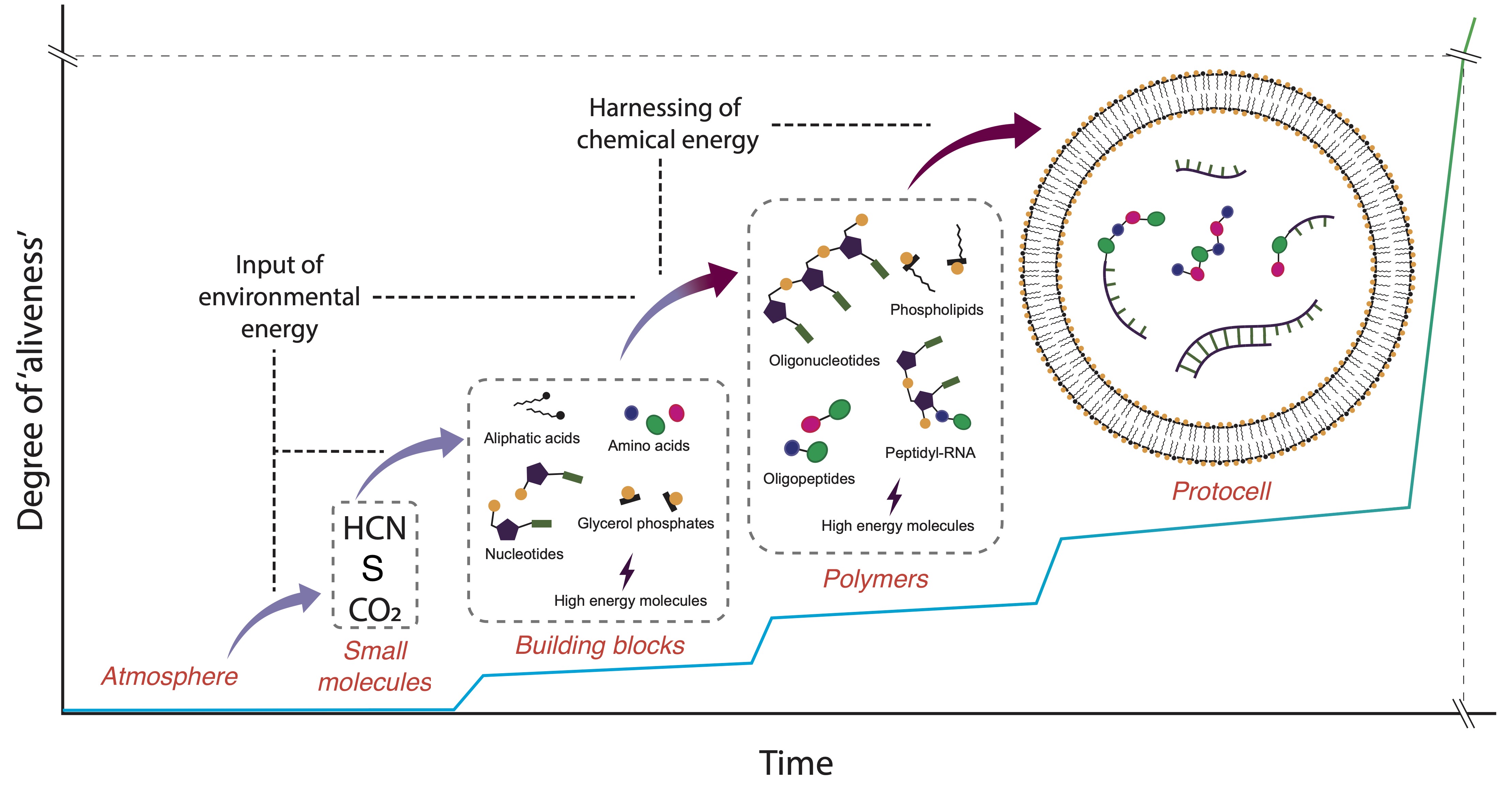|
Linked Project 1: Surface Hydrothermal Vents in the Lab: Testing a Promising New Prebiotic Scenario
Investigators
PI: Oliver Shorttle, Department of Earth Science & Institute of Astronomy, University of Cambridge
Co-I: Paul B Rimmer, Cavendish Laboratory, University of Cambridge & Paolo Sossi, EAPS, ETH Zurich
Project dates
01 June 2025 - 31 May 2028
Summary
Laboratory chemistry exploring the origin of life has been able to produce the molecules that store life’s information and package it into compartments. This chemistry needs to start with simple non-organic molecules, albeit the right molecules are rarely found at all in Earth’s environment today. So how would these molecules have been available on the early Earth to start life? Based on calculations, we have proposed a scenario where the required molecules were produced by the early Earth’s uniquely hot magmas when they interact with graphite, which would have been abundant following asteroid impacts. In this project we will test our predictions with experiments to understand (1) how hot early Earth magmas needed to be to make this scenario work,(2) how nitrogen-rich the magmas need to be, and (3) whether the feedstock molecules, once produced from the magmatic gas, dissolve in water to drive origin of life chemistry.
Linked Project 2: Surface Hydrothermal Vents in Silico: Modeling Magma-Derived Gas-Phase Chemistry in Hydrothermal Vents
Investigators
PI: Paul B Rimmer, Cavendish Laboratory, University of Cambridge
Co-I: Oliver Shorttle, Department of Earth Science & Institute of Astronomy, University of Cambridge & Paolo Sossi, EAPS, ETH Zurich
Project dates
01 October 2025 - 01 January 2029
Summary
Hydrothermal vents have appeared to be promising environments for prebiotic chemistry, though for some time severe problems have been identified for deep sea hydrothermal vents. Many of these problems can be overcome for shallow or surface hydrothermal vents. In addition, surface vents fed by high-temperature graphite-saturated magmas are predicted to be fed by a clean chemical mixture rich in hydrogen cyanide, methyl isocyanide and cyanoacetylene. These molecules are the key feedstock molecules for ultraviolet-driven prebiotic synthesis of both amino acids and nucleotides. The clean chemistry will facilitate the synthesis of these amino acids and nucleotides without many side products. The model predictions for this outcome are not empirically grounded. In this project, the successful PhD student will compare experimental results for high-temperature nitrogen-rich graphite-saturated magmas to the best current chemical kinetics model for this kind of system, and will use the experimental results to extend that model.
|

